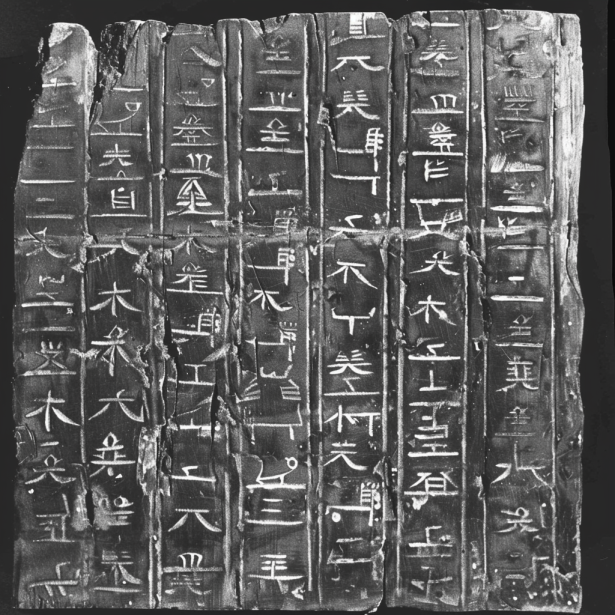Introduction
The Rongorongo script is one of the most mysterious and undeciphered writing systems discovered on Easter Island, also known as Rapa Nui. Found inscribed on wooden tablets, the glyphs of Rongorongo are believed to date back to the 13th to 17th centuries. The exact purpose and meaning of these glyphs remain unknown, as efforts to decode them have yet to yield definitive results. Some researchers speculate that Rongorongo could hold key insights into the island’s history, culture, and the mysterious decline of its civilization. The mystery of Rongorongo continues to captivate those who seek to uncover the secrets of this ancient script.
Discovery and Description of Rongorongo
Initial Discovery
The Rongorongo script was first brought to the attention of the wider world in the 19th century when missionaries on Easter Island found wooden tablets covered with mysterious glyphs. These tablets, now housed in various museums around the world, are made from native woods such as toromiro and European driftwood.
Physical Characteristics
The Rongorongo glyphs are carved in a unique, intricate style, often described as anthropomorphic and zoomorphic figures. The script is typically written in boustrophedon, where the direction of writing alternates with each line. The tablets vary in size, with some being quite large and others small enough to be handheld.
Attempts at Decipherment
Early Efforts
Initial efforts to decipher Rongorongo were made by scholars such as Bishop Jaussen in the late 19th century. He attempted to find linguistic parallels with other Polynesian languages, but these efforts did not yield a breakthrough.
Modern Research
Modern attempts to decode Rongorongo have employed more sophisticated techniques, including computer analysis and comparisons with other known writing systems. Researchers such as Thomas Barthel and Steven Fischer have made significant contributions, but a complete understanding of the script remains elusive.
Theories and Hypotheses
Several theories have been proposed regarding the purpose and content of the Rongorongo texts:
- Historical Records: Some believe that Rongorongo may contain historical records or genealogies, documenting the history and rulers of Rapa Nui.
- Religious or Ritual Use: Others suggest that the script may have been used for religious or ceremonial purposes, potentially recording chants, prayers, or rituals.
- Calendrical System: Another theory posits that Rongorongo could be a calendrical system, helping to track time and seasonal events.
Significance of Rongorongo
Cultural Insight
Deciphering Rongorongo could provide invaluable insights into the culture, beliefs, and social structure of the Rapa Nui people. Understanding the script might reveal details about their daily life, governance, and interactions with the environment.
Historical Context
Rongorongo is also significant because it represents one of the few instances of a written language developed independently in Polynesia. Decoding it could shed light on the spread of writing and literacy in ancient civilizations across the Pacific.
Challenges in Decipherment
Linguistic Isolation
One of the primary challenges in deciphering Rongorongo is its linguistic isolation. Unlike other undeciphered scripts that can be compared to known languages, Rongorongo has no obvious linguistic relatives, making cross-referencing difficult.
Limited Corpus
Another significant challenge is the limited number of surviving tablets. With only around two dozen known tablets, the corpus is too small to perform extensive statistical analysis, hindering efforts to identify patterns and meanings.
Destruction and Loss
Many Rongorongo tablets were destroyed or lost over time due to natural decay, conflict, and colonial disruptions. This loss of material has further complicated efforts to understand the script.
Current State of Research
Ongoing Studies
Research on Rongorongo continues, with scholars employing interdisciplinary approaches that combine linguistics, anthropology, and computer science. Recent efforts focus on digital imaging and high-resolution photography to analyze the glyphs in greater detail.
International Collaboration
The mystery of Rongorongo has fostered international collaboration among researchers. By pooling resources and expertise, scholars hope to make incremental progress towards understanding this enigmatic script.
Conclusion
The Rongorongo script remains one of the most tantalizing mysteries of the ancient world. Its undeciphered glyphs hold the promise of revealing the secrets of Easter Island’s past, potentially providing a deeper understanding of its culture and the factors behind its decline. Despite numerous challenges, the quest to decode Rongorongo continues to captivate and inspire researchers and enthusiasts alike. As technology and methodologies advance, there remains hope that one day the secrets of these ancient glyphs will be unlocked.
FAQs
What is the Rongorongo script?
The Rongorongo script is an undeciphered writing system found on wooden tablets on Easter Island, believed to date back to the 13th to 17th centuries.
When was Rongorongo discovered?
Rongorongo was first brought to wider attention in the 19th century by missionaries on Easter Island who found wooden tablets inscribed with mysterious glyphs.
What are some theories about the purpose of Rongorongo?
Theories about Rongorongo’s purpose include historical records, religious or ritual use, and a calendrical system.
Why is deciphering Rongorongo challenging?
Challenges include its linguistic isolation, limited number of surviving tablets, and the destruction or loss of many artifacts over time.
What is the current state of research on Rongorongo?
Research is ongoing, with interdisciplinary approaches and international collaboration aiming to make incremental progress in understanding the script.
Why is Rongorongo significant?
Rongorongo is significant for its potential to provide insights into the culture, beliefs, and history of the Rapa Nui people and for being one of the few independently developed writing systems in Polynesia.

